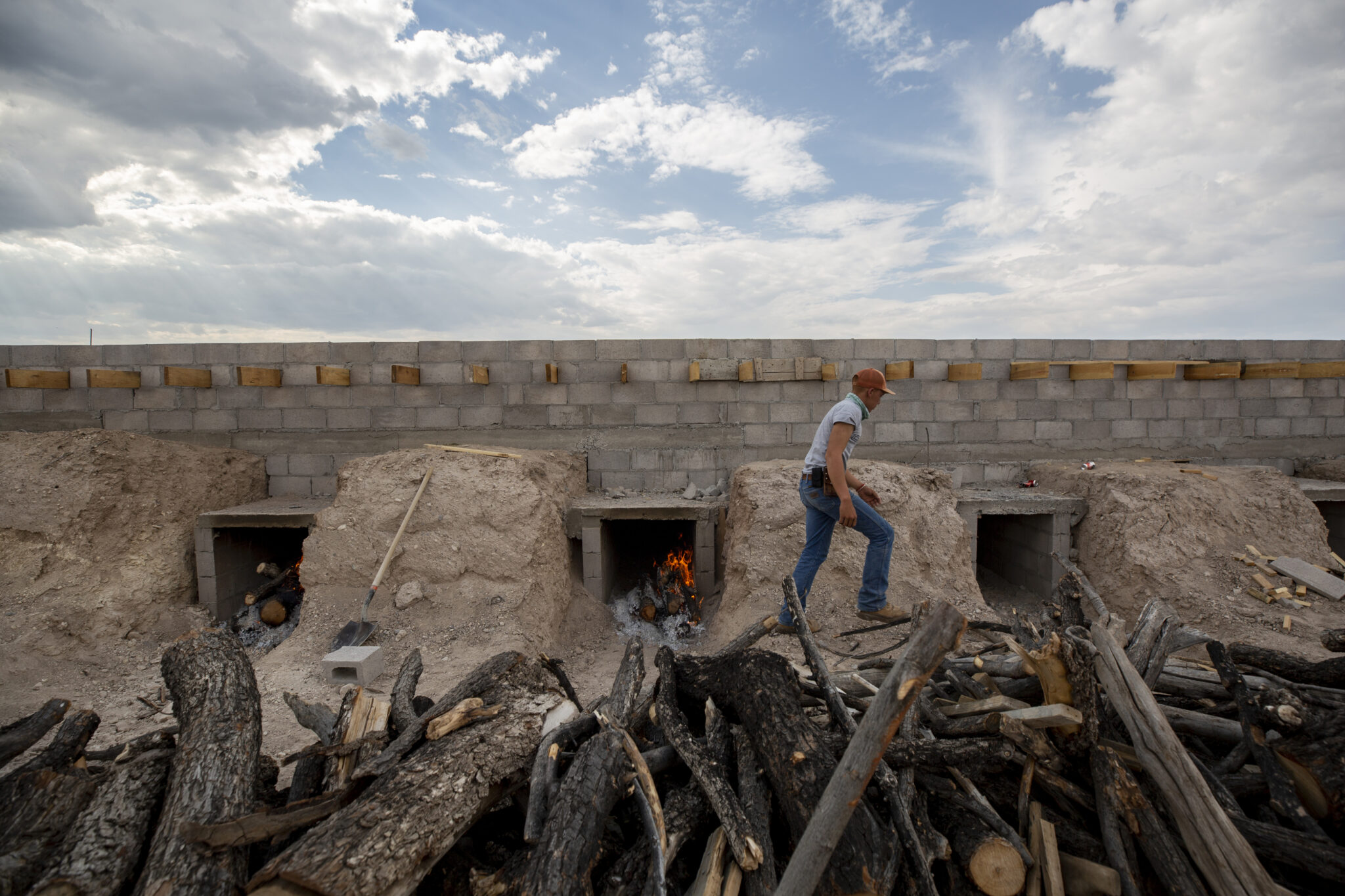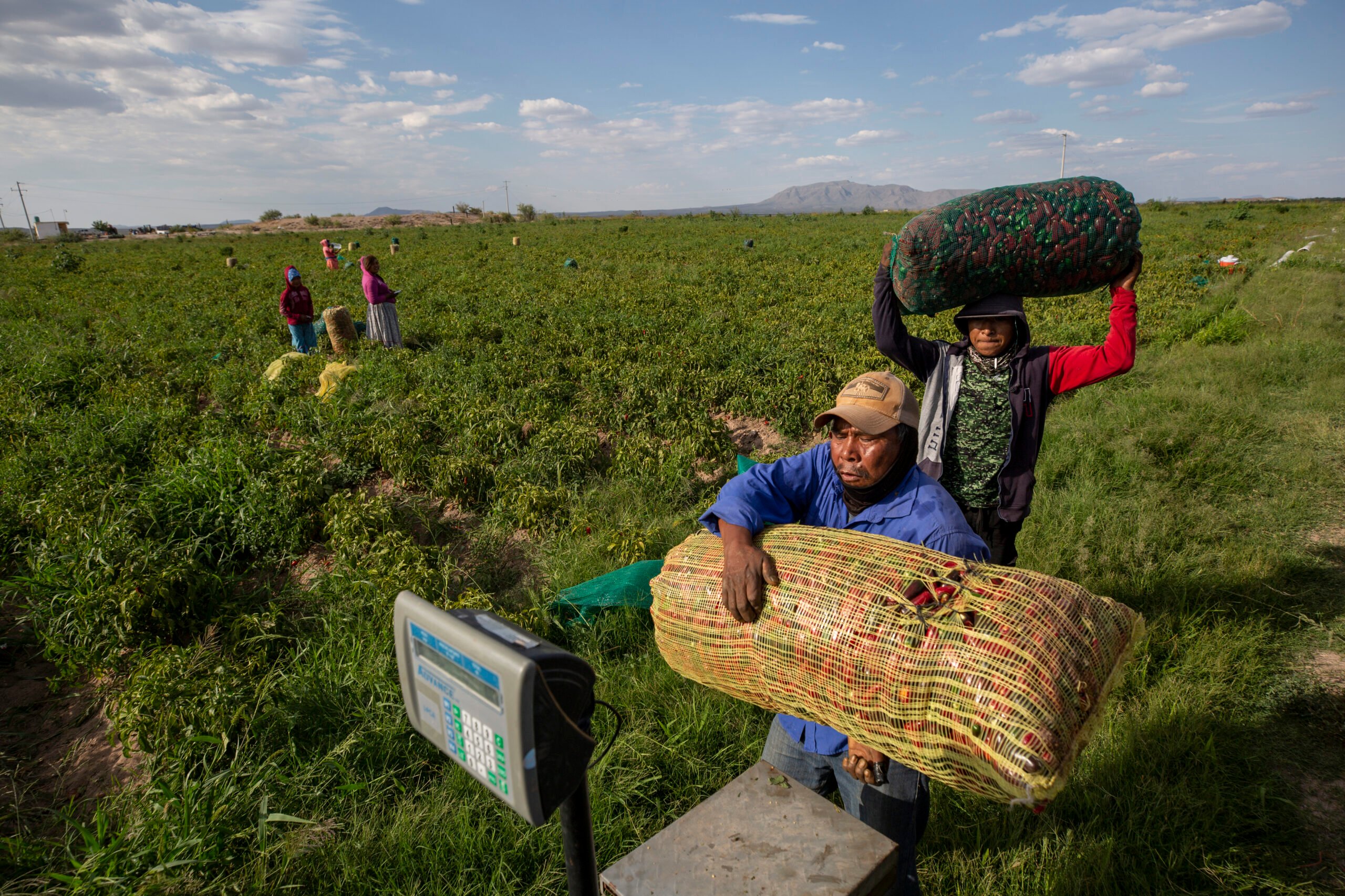This article originally appeared on Inside Climate News, a nonprofit, independent news organization that covers climate, energy and the environment. It is republished with permission. Sign up for their newsletter here. This story, reported with a grant from The Water Desk at the University of Colorado Boulder, is published in partnership with the El Paso Times.
By late August, the usual monsoon rains had scarcely materialized in this region of Chihuahua, one of the driest states in Mexico. The reservoir at La Boquilla dam was dipping lower and lower, deepening farmers’ anxiety about how they would plant their pecan, alfalfa and chile crops next spring.
Local officials in this northern Mexican town were stewing for an additional reason. Would administrators in Mexico City opt to share that precious water with the United States to fulfill a bilateral treaty? And if they did, would local farmers rise up again in protest?
With the clock ticking toward an inexorable treaty deadline, the U.S. and Mexico are under pressure to find a solution without setting off a local rebellion. And climate change and drought, not to mention provocations from Texas politicians, are complicating the challenge.
Many in Chihuahua state are pleading with the Mexican federal government to find another way to comply with the treaty while saving the reservoir water for local farmers.
The government “should take a close look at the situation, at why farmers are opposed to them taking the water,” said Jaime Ramírez Carrasco, municipal president of the town of San Francisco de Conchos, an hour’s drive south of Delicias. “We can’t let life in our region be extinguished just to give life to another region.”
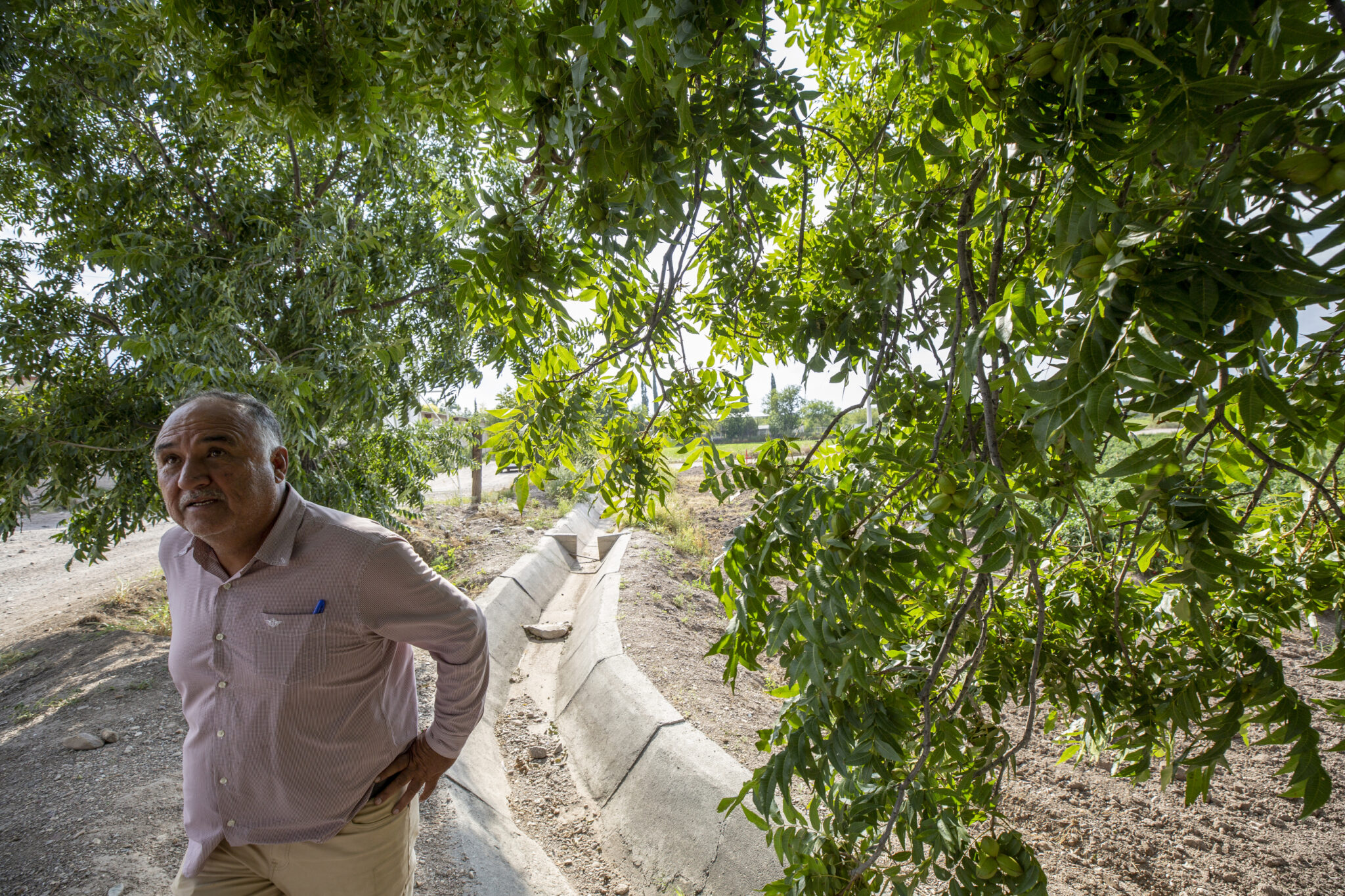
Meanwhile, others in arid Chihuahua, including environmentalists and scientists, are calling for the state to begin a transition away from water-intensive irrigation agriculture to gird for an even hotter, drier future.
Memories of the 2020 upheaval
The Rio Conchos, a lifeline flowing from the Tarahumara mountains, cuts a ribbon of green through the brown Chihuahuan Desert here. The Boquilla dam controls the river’s flow and releases water into an expansive canal system surrounding the city of Delicias. During the irrigation season, which runs from March to October, farmers plant thousands of acres of crops.
Under a 1944 treaty, however, Mexico must share water from the Rio Conchos and other tributaries of the Rio Grande with the United States in five-year cycles. It has historically relied on runoff from rainfall downstream of La Boquilla to comply with its treaty obligations rather than drawing down reservoir water.
The last time the five-year deadline was approaching, in 2020, Chihuahua was suffering from a drought, and Mexico was behind schedule on its water transfers. Alert to the prospect of conflict, the federal government sent in the National Guard to protect dam infrastructure in preparation for sending water to the United States.
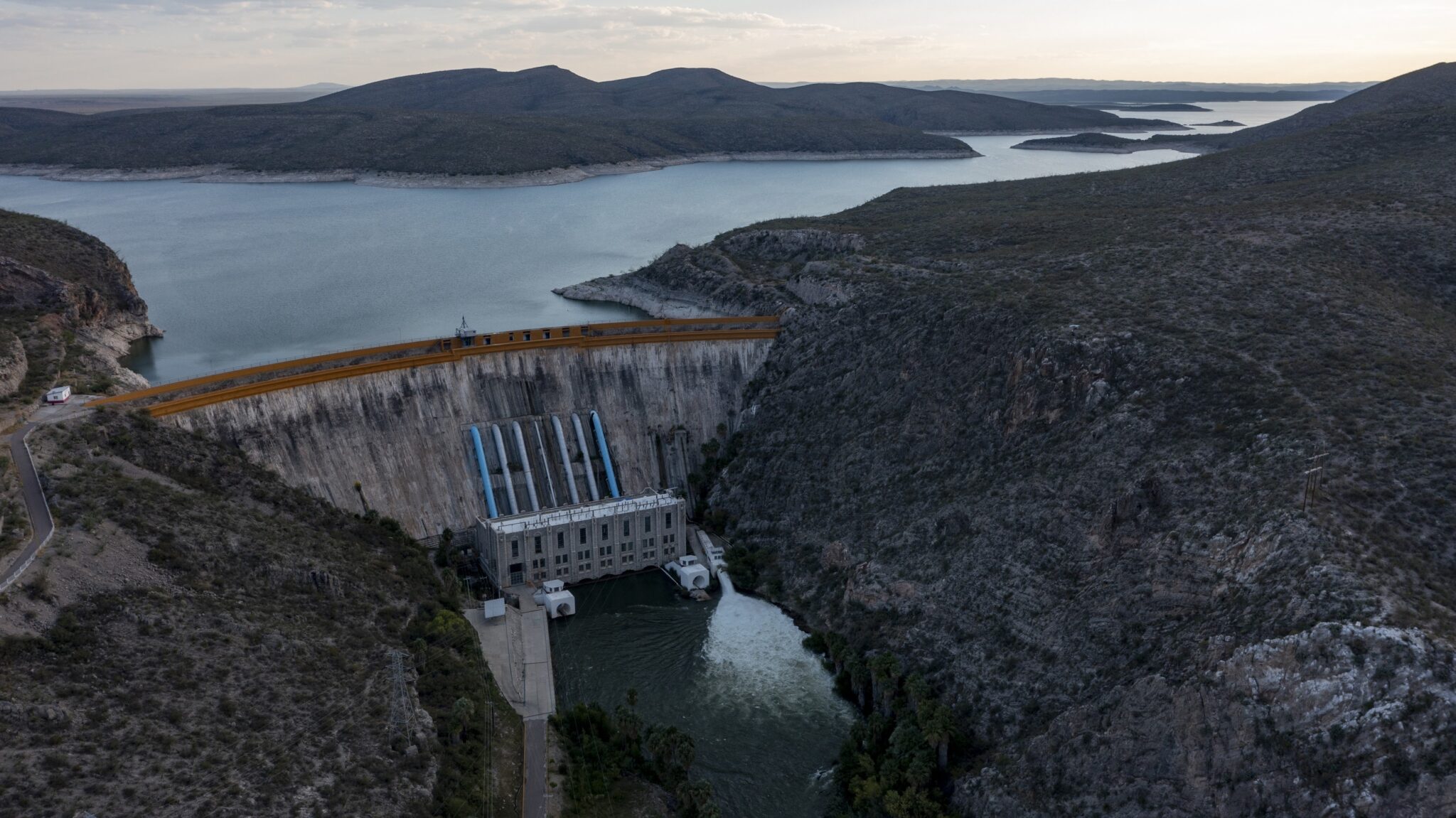
Tensions mounted in Delicias over the summer months, and in early September, thousands of local farmers and supporters swarmed across the Boquilla dam in protest. They forced out the National Guard, and one demonstrator was killed. The Mexican government still needed to deliver 294,703 acre-feet of water before Oct. 24 of that year but could no longer count on the reservoir.
Ramírez was among the protesters. Farmers and local leaders took turns defending La Boquilla and toll booths on the federal highway into San Francisco de Conchos, he recalls.
Three years later, Mexico is once again behind schedule on complying with the treaty, leaving farms and cities in Texas deprived of water. The U.S. and Mexico are negotiating a new addition to the treaty known as a minute to ensure reliable water deliveries before the current five-year cycle ends in 2025.
Again, farmers and their political allies in Chihuahua argue that the water shouldn’t come from reservoirs.
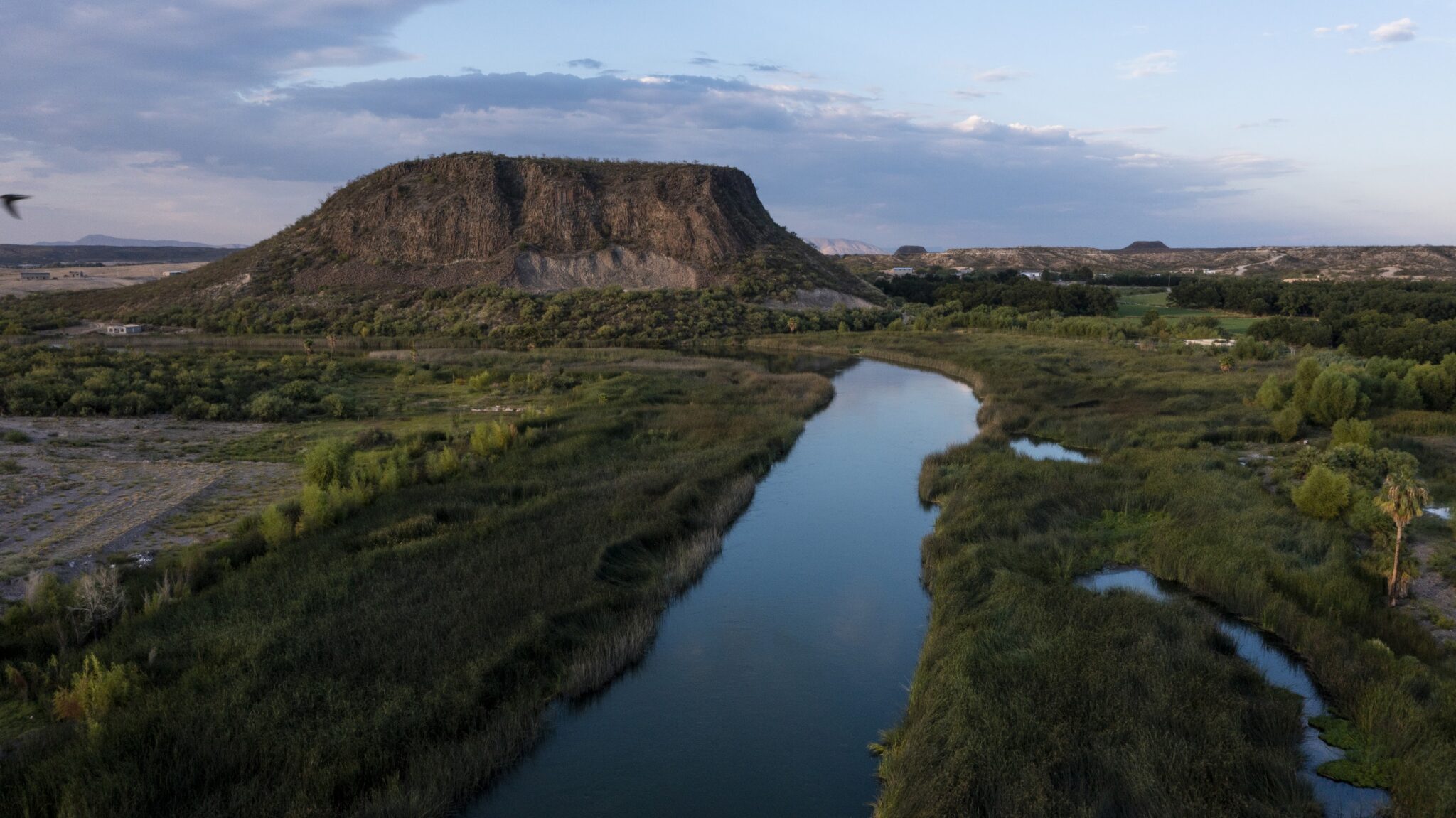
Carlos Rubinstein, a water consultant in Austin who formerly served as a Rio Grande watermaster coordinating flows in Texas, is not optimistic about the situation.
“If Mexico gives us water, the farmers in Mexico are going to feel cheated out of a portion of the water that they could have had,” he said. “Conversely, if Mexico fails to comply with the treaties, then guess what? Texas farmers are going to feel cheated that the treaty is not being adhered to.”
Chafing under a 79-year-old treaty
High in Mexico’s mountainous Sierra Tarahumara region, pine forests capture rainfall and release moisture into the soil, feeding the headwaters of the Conchos. The river flows eastward from the mountains into the Chihuahuan Desert before bending north toward the Rio Grande.
More than 700 miles north, the Rio Grande forms in the Rocky Mountains in Colorado. After winding through New Mexico, the river often runs dry in the “forgotten reach” between El Paso and Presidio, Texas. Then it is revived at its confluence with the Conchos in Presidio.
Downstream from this point, the Conchos provides more than three-quarters of the water in the Rio Grande. Farms in the Rio Grande Valley and Texas border cities like McAllen and Brownsville draw from this segment of the Rio Grande, as do farms and cities in the states of Nuevo León, Coahuila and Tamaulipas in Mexico.
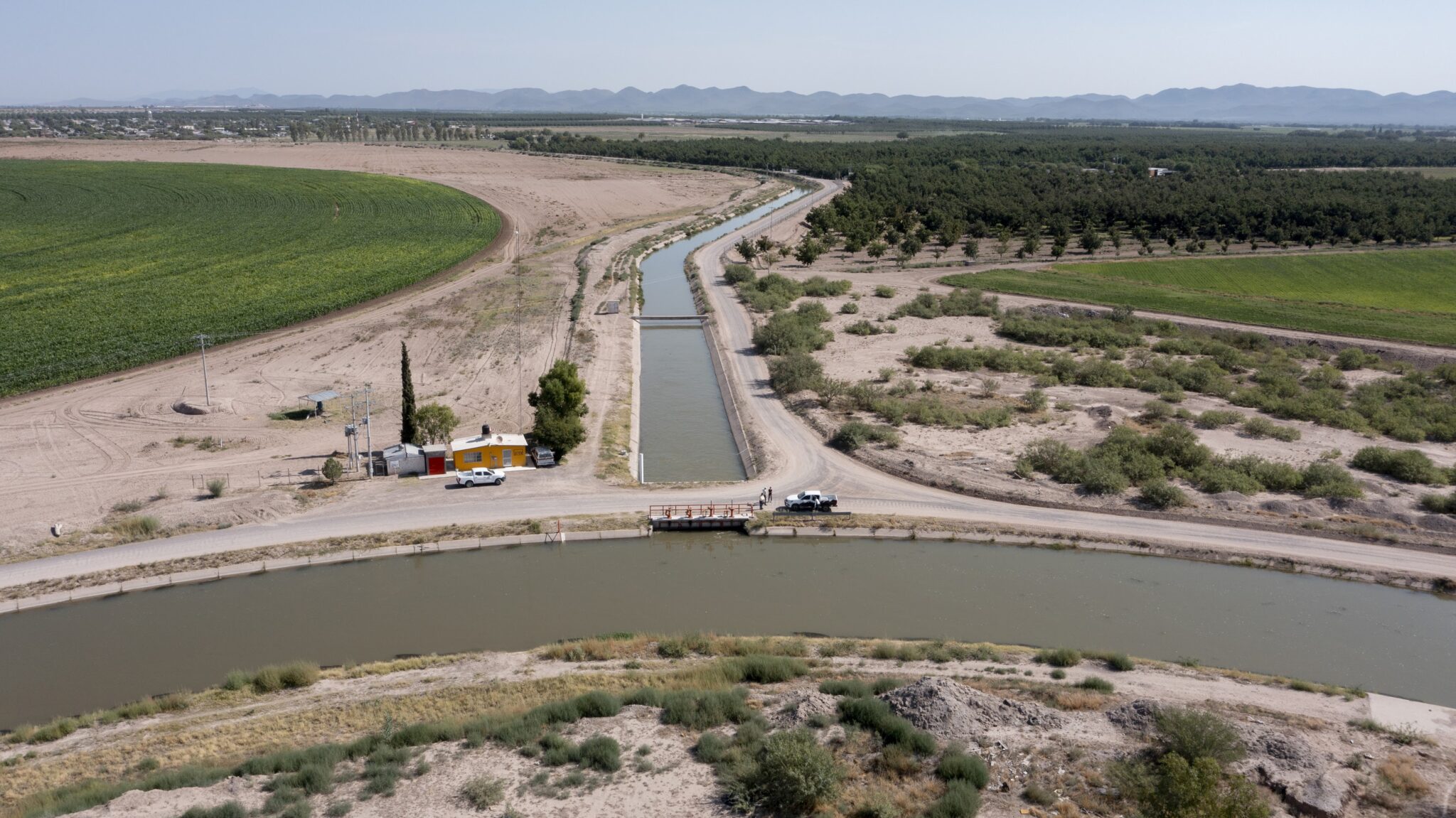
The U.S. and Mexico signed a treaty in 1944 to resolve ongoing disagreements about who could lay claim to water on these binational rivers. The treaty commits the U.S. to sending 1.5 million acre-feet of water annually from the Colorado River to Mexico, and Mexico to sending 1.75 million acre-feet of water from the Mexican tributaries of the Rio Grande to the U.S., every five years. (The treaty also divvies up the supply from the much smaller Tijuana River.)
The treaty entitles the U.S. to one-third of the flow that reaches the Rio Grande from the Conchos and five other smaller tributaries in Mexico. This water is stored in two international reservoirs, Amistad and Falcon, downstream of the Conchos on the Rio Grande.
When the 2020 deadline drew near and the farmers’ protest prevented Mexico from releasing water from La Boquilla, Mexican negotiators struck a last-minute deal with the U.S. and transferred water from the international reservoirs instead.
Mexico’s next five-year bill is due in October 2025. But the country is even further behind on water deliveries in this cycle than it was in 2020. While no penalties for a failure to comply are written into the treaty, diplomatic tensions tend to rise as the date draws near.
The math is clear: On average, the U.S. must receive 350,000 acre-feet of water annually over five-year cycles from the six tributaries covered by the agreement. As of Sept. 23, near the end of the third year of the cycle, Mexico had delivered less than 400,000 acre-feet of water to the U.S. It’s a deep hole to dig out of: In three years, Mexico has supplied less than a quarter of what it owes, rather than 60 percent.
The International and Boundary and Water Commission, or IBWC, oversees the implementation of the treaty. The U.S. section of the IBWC, based in El Paso, works closely with the Mexican section, headquartered in Ciudad Juárez. Sally Spener, a foreign affairs officer for the U.S. section, said the deficit is “of concern” to Mexican and U.S. officials.
“It becomes very difficult for Mexico to make up the difference,” she said.
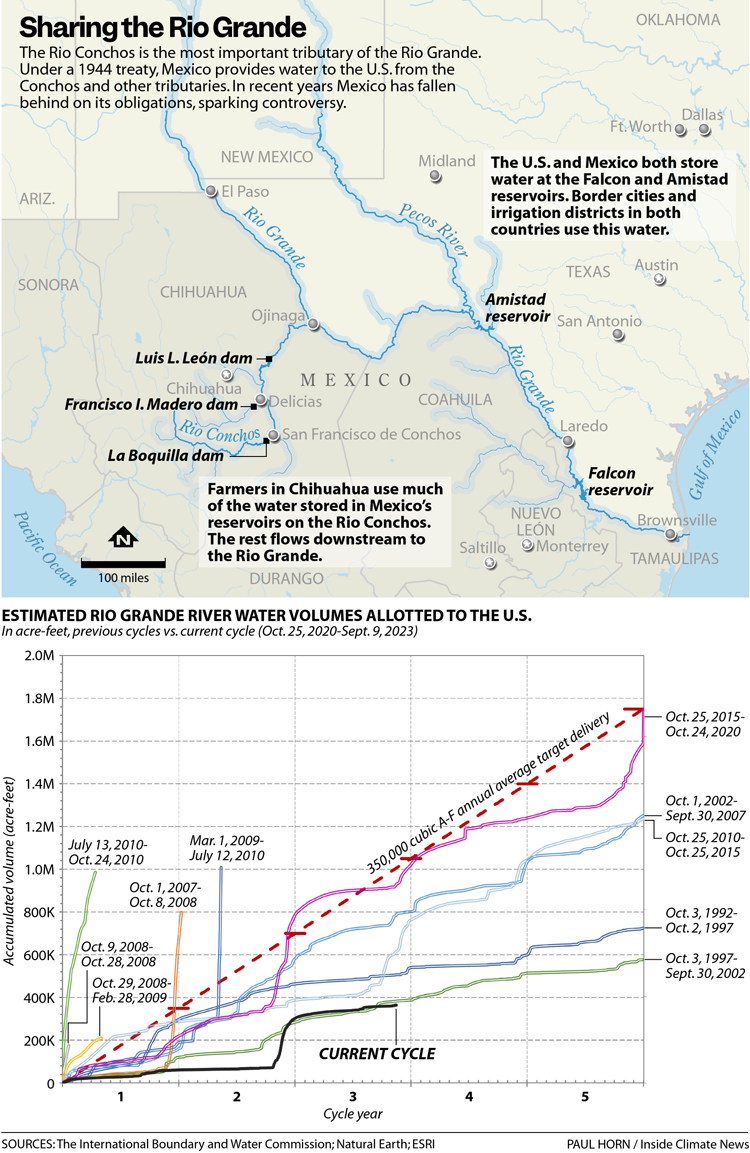
In the Rio Grande Valley of Texas, Sonia Lambert, general manager for an irrigation district in Cameron County, wishes Mexico would hurry up. Lambert said she was counting on the imported water to distribute to sugarcane, sorghum, corn and cotton farmers in her district.
This year, as in so many years since the 1990s, Texas farmers have had to buy water elsewhere or cut back on their acreage. “We can never foresee when the next allocation is going to be,” Lambert said. “All of this is due to Mexico’s noncompliance.”
On Sept. 28, Sens. Ted Cruz and John Cornyn of Texas introduced a resolution calling for Mexico to comply with its treaty obligations and “the need to engage in further diplomatic actions to ensure compliance.” Representatives of the Texas Commission on Environmental Quality have also voiced concern about the deficit in letters to the IBWC.
Spener said the bilateral commission is trying to cobble together a treaty addendum that would “grow the pie,” or expand water supplies in both countries, to help with compliance. “The current focus of our effort is to identify tools that we can employ as soon as possible to improve the reliability and predictability of Rio Grande water deliveries to users in both countries,” she said.
Adding to the tensions, Texas Gov. Greg Abbott ordered in July that a string of giant orange buoys be placed in the Rio Grande as a makeshift wall to deter migrants. The incident outraged Mexican officials and prompted the U.S. Justice Department to sue Abbott and the state of Texas, pointing out that the river was an international waterway.
A State Department official testified at a federal court hearing that the incident could jeopardize Mexico’s water deliveries to the Rio Grande. The case has not yet gone to trial.
Spener said the IBWC would not comment on the buoys because of the ongoing litigation.
How agriculture came to bloom in the desert
Spanish settlement in the Conchos basin began in the early 1600s in the ancestral homeland of the Conchos (or Yoli) and Jumano peoples. But it wasn’t until the advent of irrigation agriculture in the 1930s that the vast desert expanses of Chihuahua attracted significant numbers of settlers.
La Boquilla was built from 1910 to 1915 as a hydroelectric dam to provide power for mining infrastructure and industrial development. The Mexican government then recognized its potential for supporting agriculture in the Chihuahuan desert and founded one of its first federal irrigation districts, District 005, below Boquilla in 1932. Huge swaths of desert shrubland were converted into farms irrigated by a spiderweb of canals.
The city of Delicias, with Agriculture Avenue as its main thoroughfare, was founded in 1933 to anchor the district. Today the Delicias region produces more than $860 million in annual agricultural revenue. Pecans and alfalfa are the top two crops, accounting for almost 70 percent of the total. The Delicias region contributes 20 percent of Chihuahua’s agricultural output and about half its dairy production, according to the state government.
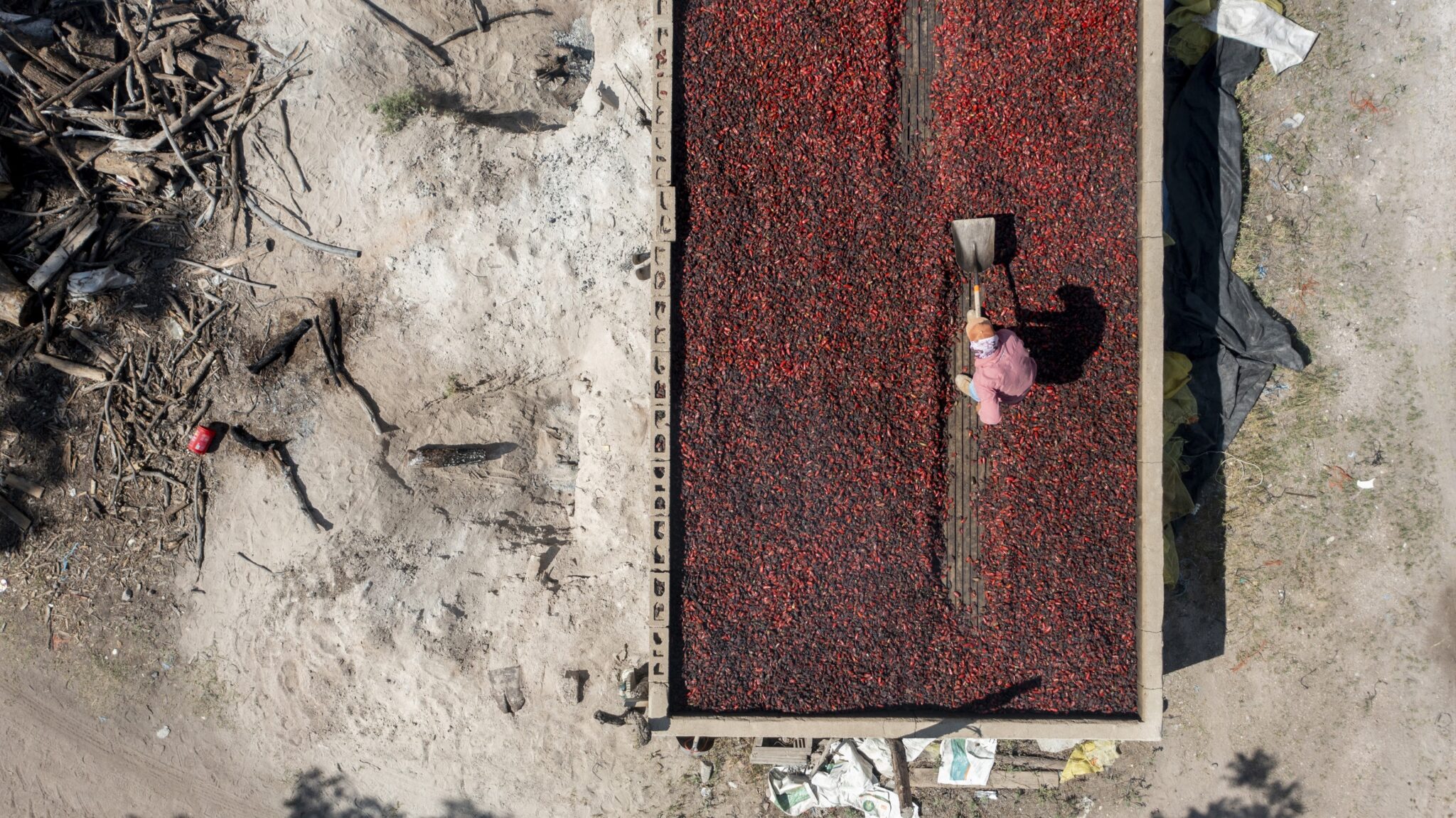
“Our feeling toward the Boquilla Dam is one of affection,” said Ramírez, the San Francisco de Conchos official. “We even call it the crown jewel dam, because it’s what gave this whole region life.”
This reliance on abundant irrigation water is a pressing reality for Miguel Jacobo Hueto, who runs his family’s alfalfa and pecan farm in Saucillo. When the irrigation season was curtailed one year because of drought, Jacobo, who has a degree in engineering, left town to work in an assembly plant in Ciudad Juárez on the border with Texas.
“When there isn’t water, there’s nothing here,” he said. “A lot of people went to the United States or other places to work that year.”
Drought and climate change are making these shortages more frequent. Over the last 50 years, temperature increases in the Rio Grande basin have been about twice the global average, according to the U.S. Bureau of Reclamation. It expects temperatures throughout the Rio Grande basin to increase by a total of four to 10 degrees Fahrenheit this century. Higher temperatures are already decreasing snowpack and reducing runoff in the river’s headwaters.
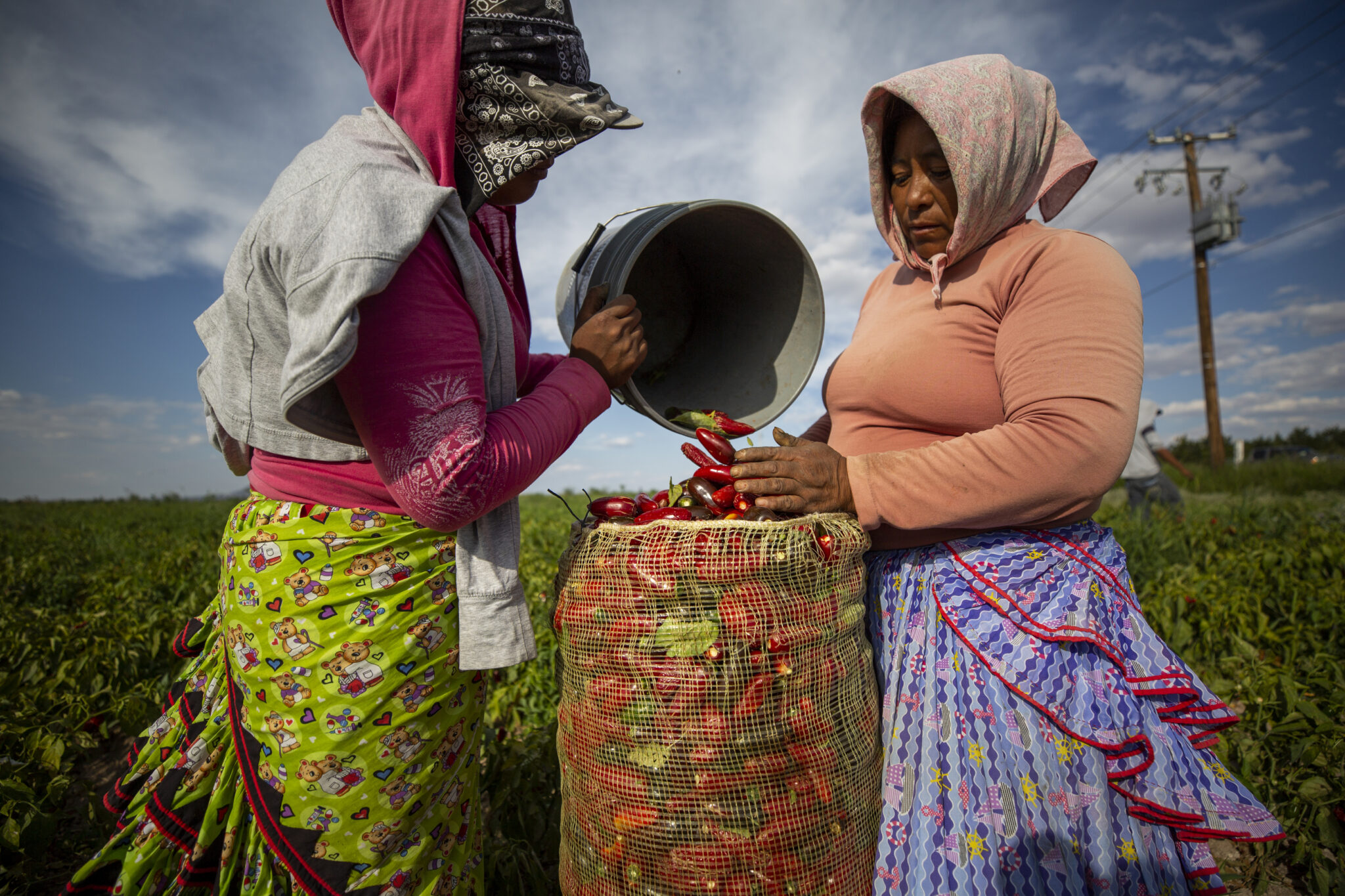
Similar patterns are seen in the Conchos basin. The Mexico Water Vulnerability Atlas, published in 2015 by the Mexican Institute of Water Technology, projected that annual runoff in the Conchos basin could decline by up to 25 percent by 2050 because of changes in precipitation and higher temperatures.
And in a study published last December, scientists found that a prolonged drought could interfere with Mexico’s ability to comply with the 1944 treaty.
“We have a new participant in these water and treaty issues, and that’s climate change,” said Rogelio Ortiz Alvarado, the director of an irrigation district in Delicias.“It’s changing all of our statistical expectations that we had in the past.”
The treaty states that if Mexico cannot fulfill the deliveries in a period of “extraordinary drought,” the deficit at the end of a five-year cycle can be made up in the following cycle. The treaty lacks a definition of extraordinary drought, but Mexico has invoked this option in the past and, so far, the United States has not formally disputed it.
Another threat to the Conchos is illegal logging in the headwaters in the Sierra Tarahumara. Criminal cartels have infiltrated the region, prompting many Rarámuri people to flee their communities. Many Rarámuri are now farmhands in the Conchos basin.
‘Over my dead body‘
Irrigation managers and politicians in Chihuahua know that Mexico has to comply with the treaty. But Salvador Alcántar, a Chihuahua congressman and member of the National Action Party, or PAN, who was a leader of the 2020 protests, said farmers would be prepared to fight again if Mexico relies on La Boquilla to fulfill the accord.
“If we lose the water, this region dies,” Alcántar said. “If the National Guard comes to open the dam, the farmers are going to protest like they did last time, or even more forcefully. Because it just isn’t fair.”
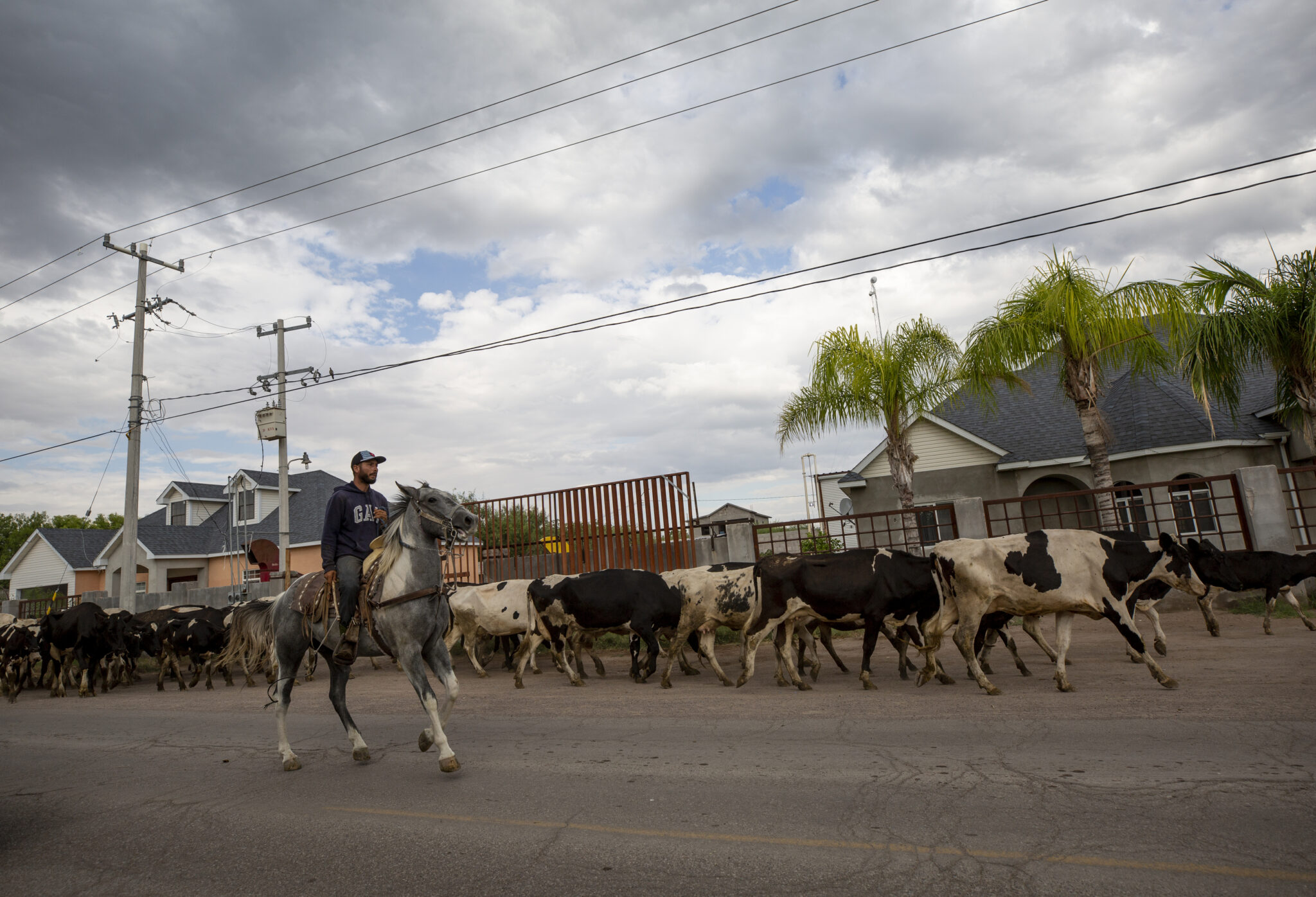
Irrigation managers assert that technical reports prepared by Mexico’s irrigation authority after the treaty was adopted in 1944 stipulated that dams in Chihuahua would not be used to meet the quotas.
“The treaty is unfavorable for Chihuahua, but we aren’t opposed to it,” said Martín Parga Castillo, the general director of the Irrigation Users Association of Chihuahua. “We have always complied with it. But the dams in Chihuahua don’t have anything to do with it.”
The rainfall runoff on which Mexico normally relies to fulfill the treaty collects downstream of La Boquilla, at the Luis L. León dam. Mexico opens the floodgates of that dam to release the water, which eventually reaches the international reservoirs, Falcon and Amistad, on the Rio Grande.
But depending on rainfall is riskier than ever. Mexican officials at the federal level now say that the other Chihuahua reservoirs must be used for treaty compliance. And unlike their counterparts in the U.S., Mexico’s state governments have little say in the process, which adds to the farmers’ frustration. In Mexico, the National Water Commission oversees water allocations to irrigation districts and allocates water to comply with the 1944 treaty.
During the 2020 standoff, the director of the commission defended using water from the Chihuahua reservoirs at a press conference. “We share a river, we share the water,” said the official, Blanca Jiménez. “It’s not okay for those upstream or on one side to take the water from those downstream or on the other side. That’s the spirit of the treaty, and how we approach distributing the water.”
Over my dead body are they going to come and take the water of Chihuahua.
In July, President Andrés Manuel López Obrador, the founder of the Morena party, declared that Mexico must abide by the treaty. He accused farmers in Chihuahua with ties to other political groups of “hoarding” water.
Chihuahua’s governor, María Eugenia Campos Galván of the PAN party, shot back, “Over my dead body are they going to come and take the water of Chihuahua.”
The National Water Commission, known as CONAGUA, did not provide responses to questions for this article.
Pleas for a Fundamental Rethinking
Samuel Sandoval Solis, a professor of water resources at the University of California, Davis, maintains that reducing demand must be at the heart of any solution. “We are attacking the symptoms, not the problem,” he said. “And we know what the problem is: We are using way too much water.”
Sandoval, who has spent years analyzing the administration of the treaty, said that CONAGUA has overallocated water permits to farmers along the Conchos. “We have to reduce the water use, and what that means is reduce the acreage,” he said.
That won’t go over well in Delicias, where landowners have invested heavily in their farms and have no plans to let them lie fallow. But elsewhere in Chihuahua, activists and academics are questioning water management practices that keep pecan farms thriving while many neighborhoods and communities have water shortages or no running water at all.
Federico Mancera-Valencia, a geographer at the Center for Research and Teaching in Chihuahua, said the intensive irrigation in the Delicias region cannot be sustained in an era of climate change.
“We need crosscutting public policy for water,” he said. “It’s not going to rain as much. The droughts will be more prolonged. So we need to transition to a new agricultural model.”
It’s not going to rain as much. The droughts will be more prolonged. So we need to transition to a new agricultural model.
In Chihuahua, the environmental organization Save Our Mountains has long campaigned for more sustainable practices to protect the Rio Conchos and Rio Grande watersheds. The group’s spokesperson, Luis Andrés Rivera, argues that as water becomes more scarce, basic human needs will have to come first.
Rivera recalls rushing outside to fill buckets while living in a Chihuahua city neighborhood where the taps ran only a few hours a day.
“Someone who lives in those circumstances is never going to empathize with someone who is watering their land with 800 cubic meters of water,” he said, referring to irrigation agriculture. “Sooner or later we’re going to have to change the agricultural model.”
Awaiting the outcome
There is no shortage of ideas for addressing the water crisis: forest conservation in the headwaters, combating illegal wells, increasing efficiency in irrigation systems. But making progress requires getting two countries that are often at odds to agree. And to avoid a repeat of the 2020 protests, the Mexican federal government will have to win over farmers in Chihuahua to whatever approach it takes.
Maria-Elena Giner, the U.S. commissioner for the IBWC, said that negotiations with Mexico are focused on increasing the reliability of water deliveries. Speaking at a North American Development Bank conference in August, she implied that this would include opening the reservoirs in Chihuahua to send water to the U.S.
While this approach could face opposition, Giner added, the treaty is inviolate. “We are working towards changing 80 years of practice,” she said. “And there may be fights over interpretation of what the treaty says, but it doesn’t matter because practice is the law of the land sometimes, right?
Spener, the foreign affairs official at the commission, said she was optimistic that the two countries would reach an agreement before the 2025 deadline. “I hope two years from now, you’ll be able to report that we were able to take proactive actions to address the shortfall in deliveries,” she said.
Still, Rubinstein, the former Rio Grande watermaster, cautions that distrust between the U.S. and Mexico has grown over the years. American negotiators must avoid “dictating” to Mexico how it should comply with the treaty, he said. “You have to remember you’re dealing with a sovereign country.”
Others emphasize that the treaty has endured for nearly 80 years and the U.S. and Mexico have worked out differences in tense circumstances in the past. On the Colorado River, for example, the U.S. and Mexico agreed to reduce water allocations when Lake Mead drops below certain levels.
On both sides of the Rio Grande, experts agree that the two countries must work together on strategies as they face the basic reality of less water.
Rubinstein remembers how when he was a Rio Grande watermaster 20 years ago, the U.S. and Mexico were also locked into a conflict over treaty compliance. He found that solutions emerged once they began cooperating.
“We had gone year after year, butting heads,” he said, “and it became evident that that wasn’t going to get us anywhere. We were able to find a cooperative way, respectful of both the sovereignty of both countries, to utilize all of the waters that are in the basin for the benefit of the users.”
